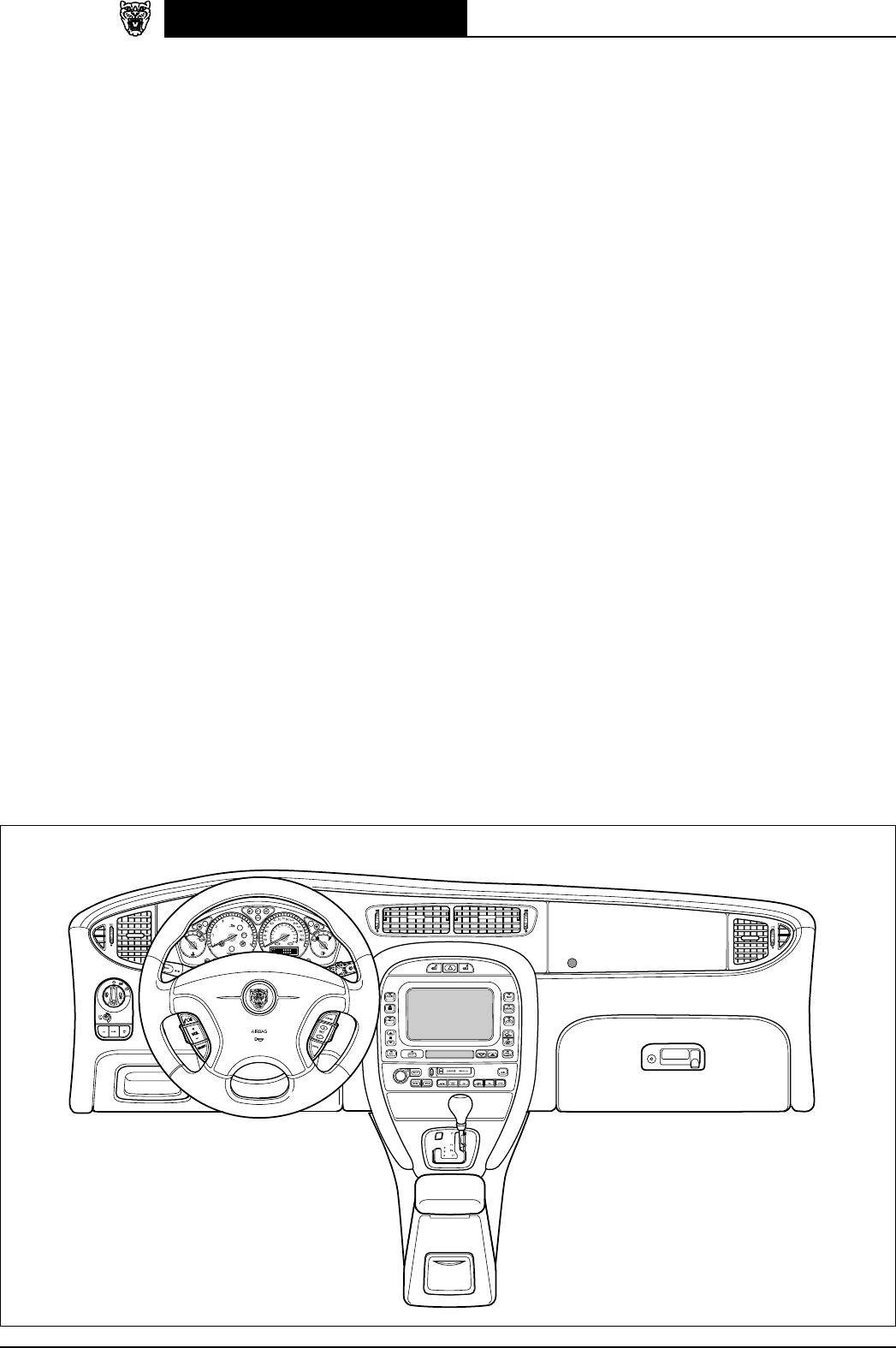
5
DATE OF ISSUE: December 2001
Jaguar X-TYPE 2.0L/2.5L/3.0L
Introduction
Electrical Guide Format
This Electrical Guide is made up of two major sections. The first section, at the front of the book, provides general information for and about
the use of the book, and information and illustrations to aid in the understanding of the Jaguar X-TYPE electrical / electronic systems, as well
as the location and identification of components.
The second section includes the Figures, which are the basis of the book. Each Figure is identified by a Figure Number (i.e. Fig. 01.1) and
Title, and is accompanied by a page of data containing information specific to that Figure.
It is recommended that the user read through the front section of the book to develop a familiarity with the layout of the book and with the
system of symbols and abbreviations used. The Table of Contents should help to guide the user.
Vehicle Identification Numbers (VIN)
VIN ranges are presented throughout the book in the following manner:
➞
VIN 123456 indicates “up to VIN 123456”; VIN 123456
➞
indicates “from VIN 123456 on”.
Jaguar X-TYPE Electrical System Architecture
Power Supplies
The Jaguar X-TYPE electrical system is a supply-side switched system. The ignition switch directly carries much of the ignition switched power
supply load. Power supply is provided via three methods: direct battery power supply, ignition switched power supply, and “Battery Saver”
power supply. The “Battery Saver” power supply circuit is controlled via GECM (General Electronic Control Module) internal timer circuits.
Refer to Figure 01.5 for circuit activation details.
Fuse Boxes
The electrical harness incorporates a hard-wired Power Distribution Fuse Box in the engine compartment and a serviceable Central Junction
Fuse Box in the front left-hand foot well. All fuses and relays (except the trailer towing accessory kit) are located in the two fuse boxes.
Vehicle Networks
The Jaguar X-TYPE employs three different networks: a CAN (Controller Area Network) for high-speed powertrain communications, an SCP
(Standard Corporate Protocol) network for slower speed body systems communications, and a D2B (Optical) Network for very high-speed
“real-time” audio data transfer. The D2B Network is a fiber optic network with a gateway to the remaining vehicle networks via the Audio
Unit (Radio Head Unit). Technician access to the three networks and the Serial Data Link is via the Data Link Connector.
Ground Studs
Circuit ground connections are made at body studs located throughout the vehicle. There are no separate power and logic grounding systems;
however, there are a certain number of components that use unique ground points.
X-TYPE INSTRUMENT PANEL


















